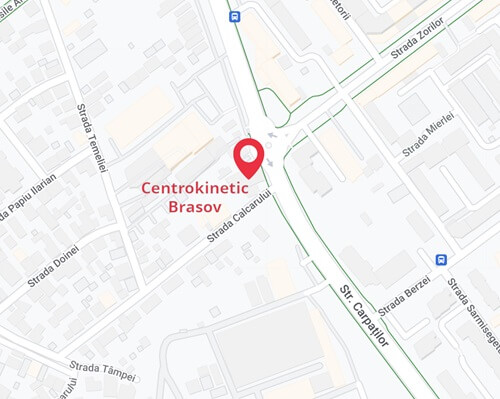Behcet's Disease: Causes, Symptoms, Risk Factors, and Treatment
.jpg)
Behcet's disease, also known as Behcet's syndrome, is a rare and poorly understood condition that can significantly impact the lives of affected individuals.[1] In this article, we will tell you more about how and why this disease occurs, its symptoms, how it can be diagnosed, and the current treatment options available!
What is Behcet's Disease?
Behcet's disease is a chronic condition that affects the blood vessels throughout the body, leading to inflammation of these vessels and tissues, resulting in a wide range of debilitating symptoms. Although it is not a fatal disease in itself, its complications can be severe, and some can even lead to death.[1][3]
Causes of Behcet's Disease
The exact cause of Behcet's disease has not yet been precisely established. Research to date indicates that certain genetic and environmental factors play a significant role in the development of this disease.[2]
Risk Factors for Behcet's Disease
There are several factors that can increase the risk of developing Behcet's disease. Age plays a significant role, as its symptoms typically appear in men and women between the ages of 20 and 30. However, Behcet's disease can also affect children or older adults.[1][2][3]
Another important factor is the place of origin. Studies show that people from Middle Eastern and East Asian countries, including Turkey, Iran, Japan, and China, are more likely to develop Behcet's syndrome. Regarding sex, Behcet's disease occurs in both men and women. However, it is worth noting that the disease is usually more severe in men.[1][2][3]
Finally, genetics can also play a role in the development of Behcet's disease. Certain genetic markers, such as HLA-B5 and HLA-B51, are associated with a higher risk of developing this disease. However, there are also individuals who have these genetic markers but do not develop Behcet's disease, suggesting that other genes related to immune function, as well as bacterial or viral infections, may play a role in triggering the disease in some genetically predisposed individuals.[1][2][3]
Symptoms of Behcet's Disease
The symptoms of Behcet's disease can vary considerably from one individual to another, depending on the parts of the body affected. However, the most common symptoms include:
- Painful and recurrent oral ulcers - these begin as raised, round lesions in the mouth, which quickly turn into painful ulcers; they are similar to regular canker sores but tend to occur in greater numbers and be more painful; they can appear on the tongue, lips, or inside the cheeks and often represent the first sign of the disease, being present long before other symptoms;
- Skin manifestations - these can vary from acne-like lesions to ulcers or reddish nodules (erythema nodosum) on the lower legs;
- Genital ulcers - red, open sores can appear on the genitals, such as the scrotum or vulva; they are usually painful and can leave scars;
- Eye inflammation (uveitis) - typically affects both eyes and can cause redness, pain, light sensitivity, and blurred vision;
- Joint pain - often affects the knees but can also occur in the ankles, elbows, or wrists.[1][2][3]
If the digestive system is affected, symptoms such as abdominal pain, diarrhea, and bloody stools may occur. In the case of the brain, inflammation of the brain and nervous system can cause headaches, fever, confusion, poor balance, or stroke.[1][2][3]
Diagnosing Behcet's Disease
Diagnosing Behcet's disease can be a complex process, as there is no single laboratory test that can unequivocally confirm this condition, and its symptoms are not specific. In general, the doctor will establish a diagnosis based on the patient's symptoms. These must include frequent recurrence of oral ulcers, at least three times a year, and the presence of at least two of the following symptoms: genital ulcers, eye inflammation, skin problems, or a positive pathergy test.[2][3]
The pathergy test is a test that evaluates immune system functionality by pricking the skin and checking the skin reaction. If a red bump develops at the site of the prick after a few days, the test is considered positive. In the context of Behcet's disease, this may indicate an abnormal immune response.[3]
To make a correct diagnosis, it is essential to exclude other diseases that produce similar symptoms, including systemic lupus, Crohn's disease, and other forms of vasculitis. In this regard, the doctor may request a blood test and other investigations that can help eliminate other possible conditions.[1][2][3]
Treatment of Behcet's Disease
Behcet's disease cannot be cured. Treatment focuses on managing symptoms. In mild cases of the disease, the doctor may recommend medications to control pain and inflammation.[1][2][3]
Treatment can be personalized to control the individual signs and symptoms of Behcet's disease. Topical medications, such as creams, gels, and ointments, can be applied directly to the skin and genital ulcers to reduce inflammation and pain. Mouthwashes and eye drops may also be recommended to relieve pain and inflammation associated with oral ulcers and eye involvement.[1][2][3]
Severe cases of Behcet's disease may require intensive treatment to control the damage caused by the disease. Corticosteroids, immunosuppressive drugs, and medications that modify the immune response may be used in combination to control inflammation. Drugs that block a substance called tumor necrosis factor may also be effective in treating some of the signs and symptoms of Behcet's disease, particularly for people with more severe or treatment-resistant symptoms.[1][2][3]
It is important to note that Behcet's disease is a chronic condition, and symptoms can come and go regardless of treatment. It can be difficult to evaluate the effectiveness of treatment, and most patients with Behcet's will likely experience intermittent symptoms throughout their lives. To cope with this situation, they can try to rest during acute episodes and be active when they feel well - physical exercise can help relieve joint and other pains. A physiotherapist can set up a personalized exercise regimen and provide recommendations on how to perform them correctly!
Behcet's disease is a complex and multisystemic condition with an unknown cause. The risk factors and symptoms vary, from oral and genital ulcers to vascular and neurological problems, and its diagnosis and treatment often prove challenging, requiring a multidisciplinary approach. However, a proper understanding of the disease and effective management can help reduce symptoms and improve the patient's quality of life. If you suspect you might have Behcet's disease, it is important to consult a doctor for diagnosis and to establish a personalized treatment plan!
Bibliography:
- Adil, Abdullah, et al. "Behcet Disease", PubMed, StatPearls Publishing, 2020. Accessed June 18, 2024.
- "Behçet’s Disease: Symptoms, Treatments, Causes & Diagnosis", Cleveland Clinic, 2020. Accessed June 18, 2024.
- "Behcet’s Disease - Symptoms and Causes", Mayo Clinic, 2023. Accessed June 18, 2024.
BUCHAREST TEAM
CLUJ NAPOCA TEAM
BRASOV TEAM
MAKE AN APPOINTMENT
FOR AN EXAMINATION
See here how you can make an appointment and the location of our clinics.
MAKE AN APPOINTMENT

































































































































